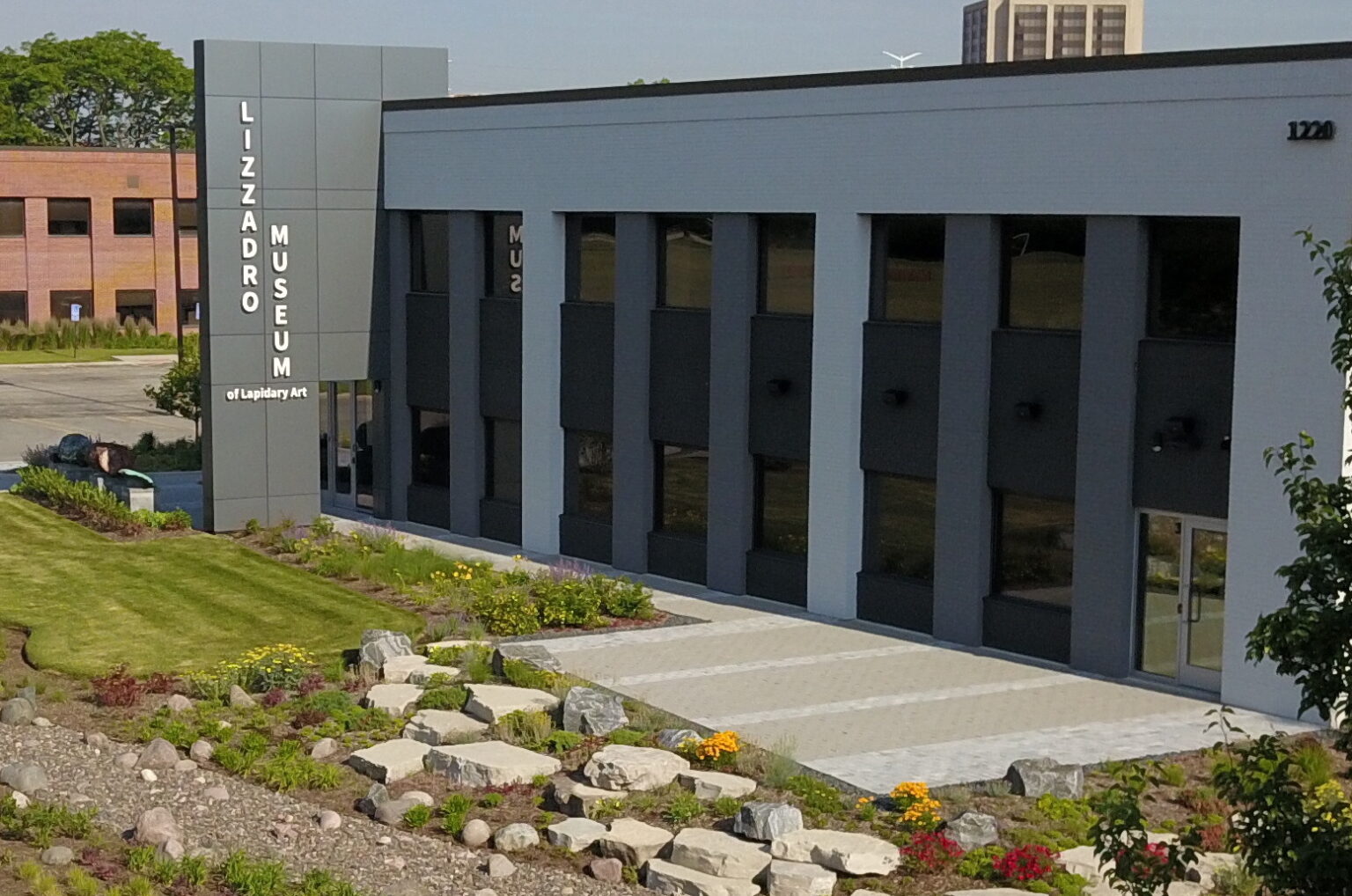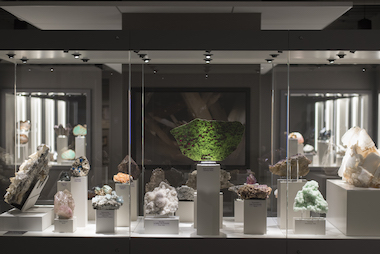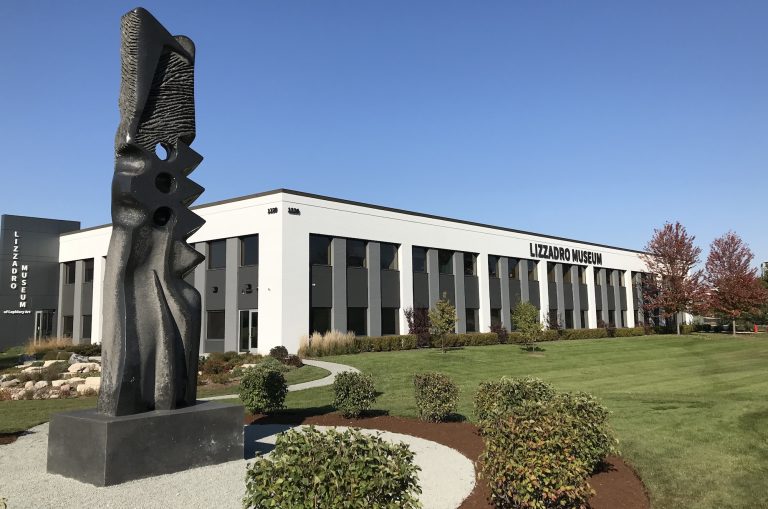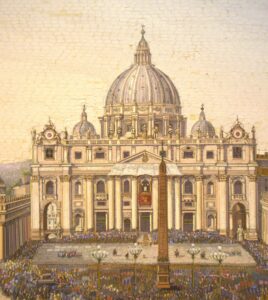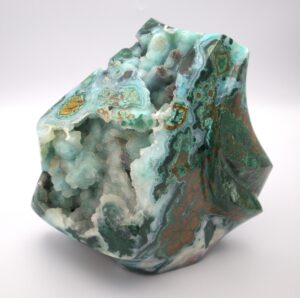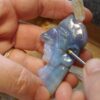Newsletter | Calendar of Events
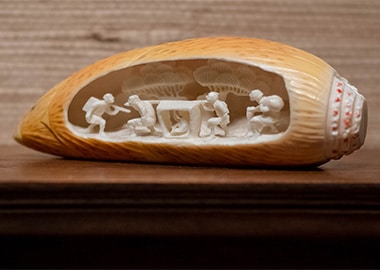


Calendar of Events
- 2727.July

Gems and Jewelry of the Field Museum
https://lizzadromuseum.org/event/gems-and-jewelry-of-the-field-museum/2:00 pm-3:00 pm07.27.2024Lizzadro Museum of Lapidary Art1220 Kensington Road, Oak Brook, IL 60523Join Jim Holstein, Collection Manager of Physical Geology and Meteorites at the Field Museum to learn about the history of the museum gem and jewelry collection. Take a trip back to the 1893 World’s Columbian Exposition to learn about the founding and growth of one of the most popular collections housed at the Field Museum and how these beautiful objects continue to amaze and inspire audiences. You will also be treated to a virtual behind-the-scenes tour of the museum collections and hear some of the unusual backstories about specimens not on public display.
Lecture – 2:00 p.m – 60 minutes
Students & Adults
Regular Museum Admission
Museum Members Free
Reservations Recommended
Sign up here - 1717.August

Roman Micromosaic Treasures
https://lizzadromuseum.org/event/roman-micromosaic-treasures/2:00 pm-3:00 pm08.17.2024Lizzadro Museum of Lapidary Art1220 Kensington Road, Oak Brook, IL 60523Italian Decorative Arts professor, Anna Maria Massinelli, PhD, presents a fascinating look into Roman micromosaic history. Explore major public and private collections and see the ways this art form was applied to luxury items and decorative art. Learn how these collectable mosaics were an integral part of the Grand Tour and how the art form continues today.
This lecture will be projected in the Museum’s Lecture Hall and will not be recorded. Please attend in-person or via Zoom.Live Zoom Lecture – 2:00 p.m – 60 minutes
Students & Adults
Regular Museum Admission
Museum Members Free
Reservations Recommended
Sign up here
Special Exhibit
The Richard H. Driehaus Lapidary Collection
Extended through August 31, 2024
Chicago philanthropist Richard Driehaus left a rich legacy of art objects to his Foundation. The Lizzadro Museum is the recipient of his lapidary collection including a variety of unique stone objects from around the world and two 19th century Roman micromosaics on loan.
Regular Museum Admission – Regular Museum Hours
Micro Treasures:
Roman Glass Mosaics for the Grand Tour
By Anna Maria Massinelli, PhD
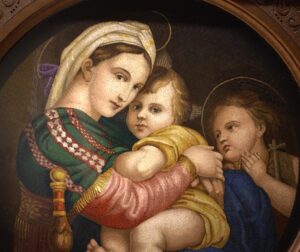
The history of micromosaics in the late 18th and 19th centuries is connected to the Vatican Mosaic Studio, a permanent institution founded in 1727 under the jurisdiction of La Reverenda Fabbrica di San Pietro. The Vatican produced two types of glass mosaic. The wall mosaic, known as ‘stile grande’ or ‘large scale mosaic,’ used larger square tesserae created by cutting glass enamels into cubes and then slicing them to form regular squares. In the late 18th century, the ‘stile minuto’ technique emerged using opaque glass pulled into thin threads while hot. The resulting canes were then sliced into micro tesserae, also called ‘smalti filati’ or spun enamels, to create the mosaic. Early micromosaics predominantly featured rectangular and square tesserae arranged in rows and had a limited color range, but by the 19th century the technique had been perfected and the color palette became virtually unlimited. The support base for mosaics, called ‘cassina’, was typically made of copper, though marble was also used.
Mosaicists working in the Vatican Studio were not well compensated, but the papal workshop did not exclusively own the mosaic techniques. The artists began working independently to supplement their incomes and many private micromosaic workshops flourished in Rome during the early 19th century. Most were situated near the Spanish Steps, where wealthy tourists on the “Grand Tour” would frequent artists’ studios, purchasing souvenirs to take home. The Grand Tour – an educational rite of passage for British and other European nobility popular from the 17th to mid-19th centuries – was a journey around the European continent for exposure to Classical and Renaissance art and culture.
Giacomo Raffaelli (1743-1836) held the first documented exhibition of micromosaics in 1775 that enchanted the travelers of the Grand Tour by displaying small fashionable accessories, as well as larger items. A brilliant craftsman and designer, Raffaelli reinvented the mosaic in profound ways, combining elements from the natural and classical worlds. After Raffaelli’s exhibition, this genre became an obsession. He is credited with creating a fashion trend that lasted throughout the 19th century. Historical sources indicate there were almost one hundred mosaic workshops in Rome by the second half of the 19th century, growing in number to satisfy the increased demand of the mosaic collectors, tourists, and international exhibitions from around Europe as Roman mosaics became prized possessions.
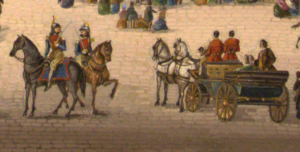
The Vatican Studio followed the trend and began selling mosaics to private clients as well. Inspired by iconic subjects from Renaissance masters, mosaicists working for the Reverend Studio of St. Peter created remarkable works. For instance, “Madonna della Seggiola” (The Madonna of the Chair) is based on a 1512 painting by Raffaello da Urbino (1483-1520). The virtuoso interpretation of the original depicts Mary as a young peasant woman holding the Child at her chest in a chair reserved for papal dignitaries. Another example is Biagio Barzotti, 19th century mosaicist who collaborated with the Vatican Studio. In 1879 he was commissioned for a mosaic showing St. Peter’s Square at the moment of the Papal blessing. Barzotti’s mosaic was very successful, and he repeated it in several other versions. The panoramic view is very unusual for this size mosaic: the detailed architectural elements, the crowd of people and carriages, the Swiss guard on horseback. This mosaic photographically conveys the atmosphere of intense participation of the people and tourists in the presence of the Pope, represented in the window from which he imparts the blessing. Barzotti’s skilled work is one of the most celebrated views of St. Peters Square. Both mosaics from the Driehaus collection are on display at the Lizzadro Museum through August 31, 2024.
Dr. Anna Maria Massinelli is a Art History Professor at the Academy of Fine Art of Brera in Milan, Italy. She specializes in Decorative Arts including Pietra Dura, Micromosaics, Jewelery, and the History of the Medici Grand-Ducal Collections. She has contributed to exhibition catalogues, international conventions, art magazines and written several books on these subjects. She will present “Roman Micromosaic Treasures” on Saturday, August 17 at 2 p.m. via Zoom.
Please join us in person at the Museum or live online. Register here. This program will not be recorded.

 Two Museum Staff members have been working towards degrees through the Gemological Institute of America (GIA). Museum Educator Sara Kurth recently received a $5,000 scholarship from the Accredited Gemologists Association (AGA) and won the 2024 Fall GIA scholarship award to pursue her Graduate Gemology degree. Assistant Museum Shop Manager Samantha Scott received her Applied Jewelry Professional certification from GIA in the fall of 2024. As they continue their studies, the Museum is preparing to introduce an ongoing program series titled “Rock to Gem,” aimed at highlighting the journey through the geological and gemological processes that bring different gemstones to life.
Two Museum Staff members have been working towards degrees through the Gemological Institute of America (GIA). Museum Educator Sara Kurth recently received a $5,000 scholarship from the Accredited Gemologists Association (AGA) and won the 2024 Fall GIA scholarship award to pursue her Graduate Gemology degree. Assistant Museum Shop Manager Samantha Scott received her Applied Jewelry Professional certification from GIA in the fall of 2024. As they continue their studies, the Museum is preparing to introduce an ongoing program series titled “Rock to Gem,” aimed at highlighting the journey through the geological and gemological processes that bring different gemstones to life.
Become a Member and Save!
A membership to the Lizzadro Museum is the perfect gift
for the rockhounds in your life!
Join today!
Want to stay informed?
Sign up below to receive our emails!
By submitting this form, you are consenting to receive marketing emails from: The Lizzadro Museum of Lapidary Art, info@lizzadromuseum.org. You can revoke your consent to receive emails at any time by using the SafeUnsubscribe® link, found at the bottom of every email. Emails are serviced by Constant Contact
Have you missed a lecture?
Check out our YouTube Channel
to watch all of our virtual lectures!

